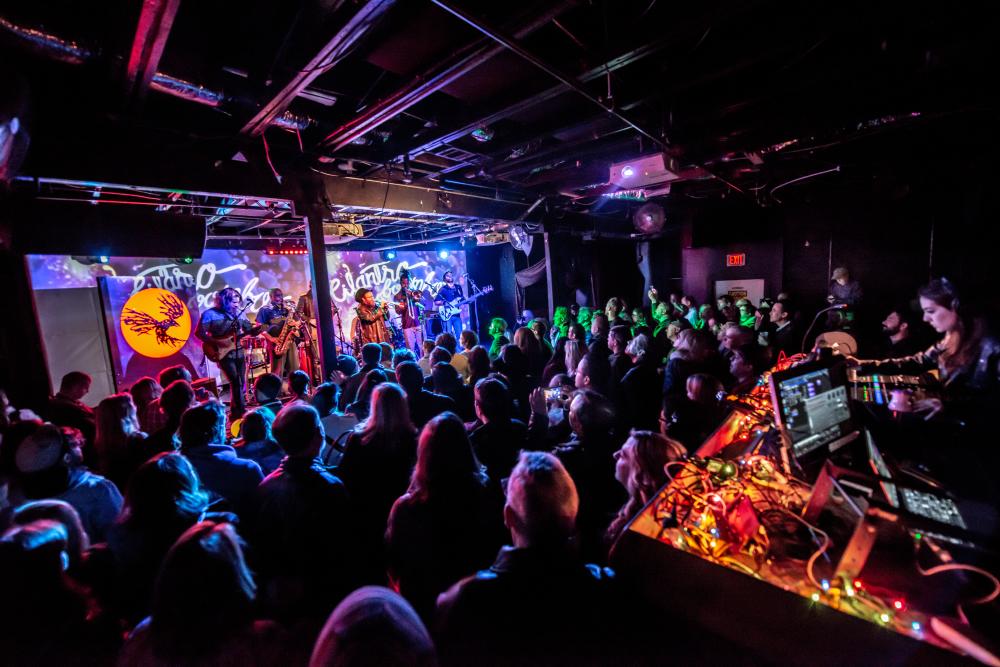What Does Dance Fridays Mean?
Wiki Article
Not known Facts About Dance Fridays
Table of ContentsSome Known Incorrect Statements About Dance Fridays Unknown Facts About Dance FridaysMore About Dance FridaysAn Unbiased View of Dance Fridays
Allow's think of Salsa dancing and music as a fantastic large Tree that resembles this: Salsa is danced globally while numerous technological elements of the dancing coincide throughout styles (6 actions over 8 beats danced on a quick-quick-slow or slow-quick-quick rhythm), there are several "characteristic" functions of the major designs of Salsa that distinguish one from the other.Pairs taking part in a Gambling establishment Rueda dance all relocate unison as called by a Leader. Distinguishing attributes of Cuban style salsa are circular turn patterns (with "break back" actions on counts 1 and 5) along with body motion inspired by typical Afro-Cuban folkloric dances. Distinct features of Cali design salsa fasts and elaborate maneuvering, danced with a solid hand hold connection in between companions.
The origins of the design are a subject of debate, yet it is claimed that New York style Salsa dance came from the 1960's due to the influx of Latin American emigrants after the Cuban Transformation. Eddie Torres is the most well understood New york city style dancer, being nearly universally credited with promoting the design to dance centres beyond New York.
The standard rhythm of "On-2" is slow-quick-quick. The "youngest" of the designs of Salsa, L.A. Design (some individuals have called it "West Coastline" design) ended up being preferred in the 1990's and has its beginnings in ballroom (Mambo, Swing and Cha, Cha, Cha). Turn patterns lead and comply with strategies are heavily influenced by these designs, with the Cross Body Lead being the cornerstone of the design.
The Only Guide for Dance Fridays
Style are implementation of turn patterns and numbers in the "port", with the break steps on counts "1" and "5". This design is likewise identified by expensive and usually detailed arm designing by the follow to accent the "1" and "5" counts. The basic rhythm of "On-1" is quick-quick-slow. While Salsa songs has solid origins in Cuban, Colombian and Puerto-Rican folkoric traditions, it can not be discounted that all Afro-Latin and Latin American societies have actually contributed to contemporary Salsa music as we understand it today.It's possible that because of political reasons the contribution of Afro-Cuban society and heritage to modern Salsa in the 1960's and 70's is not widely identified, yet it can not be disregarded the significant contribution and impact of the "Queen of Salsa", Celia Cruz. A household name in Cuba and the Central Americas as a singer in the 1950's, Celia left Cuba for the U.S

Today Salsa songs is developed, performed and renowned global. In 2000 the impact of Latin American songs and society (not just Salsa) was identified by the National Academy of Recording Arts and Sciences in the United State and the Latin Grammy Honors were produced. The Latin Grammy's have brought interest to the Salsa Legends and contemporary Salsa musicians alike
The Ultimate Guide To Dance Fridays
differentiating qualities of Salsa songs are: 4/4 time signature, Boy Clave and Tumbao rhythms, Montuno Piano Unless you have a background in songs, the above 3 attributes probably indicate absolutely nothing to you. A much easier way to explain Salsa songs is how it does NOT seem like various other kinds of Latin American prominent songs.Bachata is a straight 4 beat dance with a prevalence of a syncopated guitara line and a clear lack of any kind of "hard" piano, brass (trumpet, trombone) lines. Cha, Cha, Cha looks like Salsa music one of the most as it seems like "really sluggish" salsa/mambo. salsa club san francisco. Cha, Cha, Cha can be identified by it's focus of the double tumbao beat on matters 4 +5 and 8 +1 (the "cha-cha-cha") You have actually been to a Salsa night at a club and you're connected you like the songs, the energy, the appearance of 2 dancers sliding throughout the dancing floor executing great rotates and transform patterns
It's time for lessons. With a lot of studios available and various designs to pick from, where does a full beginner start? A lot of all new dancers pick to find out L.A. "On-1" design slotted Salsa styles are one of the most widespread in North America (with some exceptions of some urban centres that still mostly embrace Cuban and Puerto Rican styles) and L (https://www.openstreetmap.org/user/salsacrazysf1).A
.A. Style will promptly teach you the basics of Salsa timing, weight transfer and transform pattern implementation. Many dancers, when they have actually had a year or 2 of dance L.A. Design Salsa under their belts, "switch" to New York design in order to expand their dance vocabulary; but numerous professional dancers decide to stay with just one design of Salsa and appreciate their time on the dance flooring read the article because particular design (salsa club san francisco).
Design and New York Design all being danced in the exact same club, with a number of the dancers being able to switch from one style to the various other from one song to the following. Regardless of which style you pick it is essential to stay with that design up until you're really comfy with the fundamentals of timing, body rhythm and structure relocation implementation prior to considering "changing" designs (if you want to).

Report this wiki page